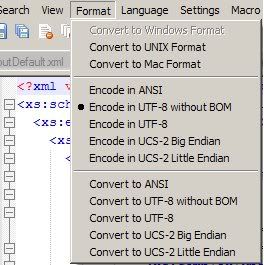It turns out, the answer is that what I'm seeing is a Byte Order Mark, which is a character that tells whatever is loading the document what it is encoded in. In my case, it's encoded in utf-8, so the corresponding BOM was EF BB BF, as shown below. To remove it, I opened it up in Notepad++ and clicked on "Encode in UTF-8 without BOM", as shown below:
 .
.
To actually see the BOM, I had to open it up in TextPad in Binary mode:, and conducted a Google search for "EF BB BF".

It took me about 8 hours to find out this was what was causing it, so I thought I'd share this with everyone.
George Stocker
2008-11-14 21:15:28